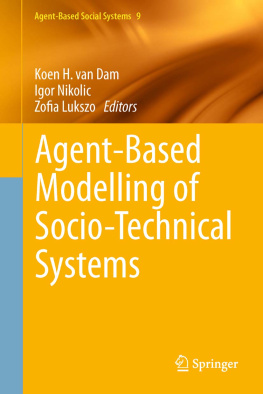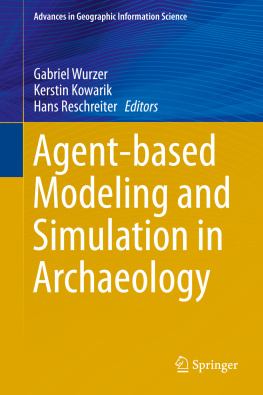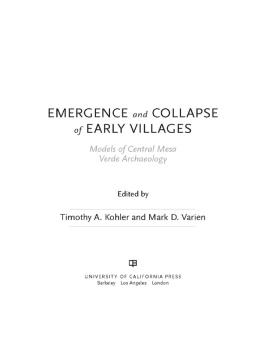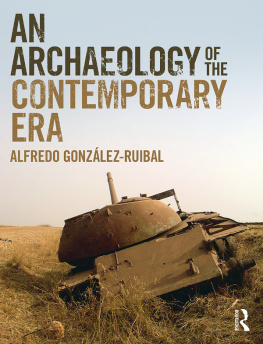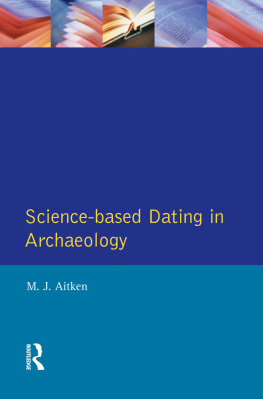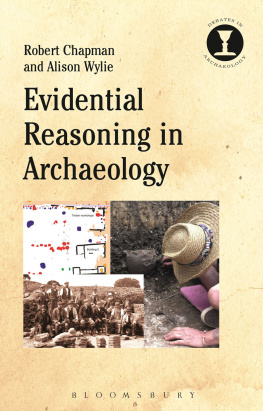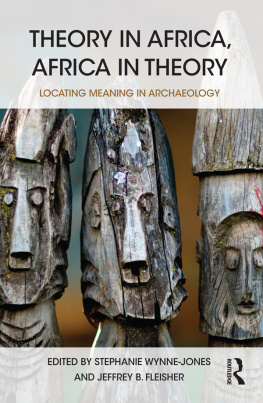An Enchantment of Digital ArchaeologyDigital Archaeology: Documenting the Anthropocene
Series Editor: Andrew Reinhard (American Numismatic Society)
The archaeology of the late 20th and 21st centuries supplements traditional landscapes, sites and artefacts with those that are digital. People increasingly inhabit digital places, investing time and money into spaces accessed only through screens. People and corporations continue to create these digital built environments and their supporting, physical architecture at an astonishing rate for a rich diversity of purposes. This series aims to answer the questions of what the heritage of digital things and places looks like and how it can be understood archaeologically.
Volume 1
An Enchantment of Digital Archaeology: Raising the Dead with Agent-Based Models, Archaeogaming and Artificial Intelligence
Shawn Graham
An Enchantment of Digital Archaeology
Raising the Dead with Agent-Based Models, Archaeogaming and Artificial Intelligence
Shawn Graham
First published in 2020 by
Berghahn Books
www.berghahnbooks.com
2020 Shawn Graham
All rights reserved. Except for the quotation of short passages
for the purposes of criticism and review, no part of this book
may be reproduced in any form or by any means, electronic or
mechanical, including photocopying, recording, or any information
storage and retrieval system now known or to be invented,
without written permission of the publisher.
Library of Congress Cataloging-in-Publication Data
A C.I.P. cataloging record is available from the Library of Congress
Library of Congress Cataloging in Publication Control Number: 2020937013
British Library Cataloguing in Publication Data
A catalogue record for this book is available from the British Library
ISBN 978-1-78920-786-6 hardback
ISBN 978-1-78920-871-9 paperback
ISBN 978-1-78920-787-3 ebook
https://doi.org/10.3167/gra7866
Contents
Tables
Acknowledgements
This book has been through many iterations. Thank you to Caryn Berg for taking a chance on it. At various points, conversations or interventions by Andrew Reinhard, Sara Perry, Colleen Morgan, Steve Leahy, Alex Lane, John Aycock, Erik Champion, Tara Copplestone, Meghan Dennis, Christian Rollinger, Andreas Angourakis, Angus Moll, Iza Romanowska and Tom Brughmans made this a better book than it would otherwise have been. Lea Stirling gave me the second chance from which all others flowed: thank you, Lea! Rob Blades, Nadine Feuerherm and other souls in FYSM1405a in 2010/11 got to enjoy a very early attempt at fostering digital enchantment with agent-based models; Id like to think Im better at it now and that their work was not in vain. Thank you.
Much of this book was written at the Second Cup; I can recommend the butter tarts.
Parts of chapter 1 are a reworked version of my chapter Counting Bricks and Stacking Wood: Providing the Physical Fabric, in The Cambridge Companion to Ancient Rome, ed. Paul Erdkamp (Cambridge University Press, 2013), 27896. Used with permission.
Chapter 2 integrates edited materials from the following: S. Graham, Networks, Agent-Based Modeling, and the Antonine Itineraries, Journal of Mediterranean Archaeology 19, no. 1 (2006): 4564, reproduced with the kind permission of Equinox Publishing Limited; S. Graham, Behaviour Space: Simulating Roman Social Life and Civil Violence, Digital Studies/le Champ Numrique 1, no. 2 (2009), DOI: http://doi.org/10.16995/dscn.109, CC BY 4.0; chapter 3 also includes material from the latter piece.
Parts of chapter 4 contain a slightly reworked version of Pulling Back the Curtain: Writing History through Video Games, in Web Writing: Why and How for Liberal Arts Teaching and Learning, ed. Jack Dougherty and Tennyson ODonnel (University of Michigan Press, 2014), 14960, chapter copyright S. Graham.
Chapter 4 also contains a modified version of On Games That Play Themselves: Agent-Based Models, Archaeogaming, and the Useful Deaths of Digital Romans, in The Interactive Past: Archaeology, Heritage, and Video Games, ed. Angus A.A. Mol, Csilla E. Ariese-Vandemeulebroucke, Krijn H.J. Boom and Aris Politopoulos (Sidestone Press, 2017), 12331, used with permission.
Appendices A and B reimplement and modify code developed by Tom Brughmans, reused with permission.
Introduction
This is a book about enchantment and digital archaeology. It is a book about trying to pull together the connective threads on nearly twenty years of work in simulation, agent modelling, video games and Roman economic history. These are not, on the face of it, enchanting topics. But hear me out. Its about trying to remember what it was that was magical about archaeology when I first began, and why I find digital approaches to archaeology to still be magical.
This book is about, in a narrow sense, the ways in which Ive reanimated Roman society using agent-based modelling and archaeogaming. But in a larger sense, its about digital enchantment in the ways that scholars like Sara Perry (2018, 2019) and Russell Staiff (2014) envision. Its about responding to archaeology not as a crisis to be solved, but as a source of wonder. It is about responding to digital archaeology as if it is sensible in the ways people like Yannis Hamilakis (2014) have written. Its about whether digital archaeology is fast or slow, whether it is engaging or alienating, whether or not it is sensory and sensual. My aim is for you to be enchanted and delighted by digital archaeology as I trace a line through my own history of disenchantment and the reawakening of wonder through agent modelling, archaeogaming and artificial intelligence.
What are computers for, in archaeology?
The question might seem absurd. What is a pencil for? A shovel? A database? Our tools are only ever appropriate to particular situations. Not every moment on an excavation requires a mattock or a pail; a dental pick and a dustpan might be called for. By the same token, maybe we dont always require a desktop computer to achieve a digital archaeology. Maybe a smartphone is all we need. Maybe an iPad. Maybe we just need what Jentery Sayers (2018, elaborating on Kirshenbaum 2009) calls paper computers, or the habits of thought that are themselves digital.
The point is, if we stop simply accepting the ubiquity of a computer, we can see again some of the enchantment these amazing devices possess, and we can begin to imagine again the kinds of questions to which they might be best suited. There is plenty of criticism of computing and of digital archaeology that focuses on the alienating aspects of the work. Caraher (2015, 2016, 2019), for instance, has argued that to use a computer as part of your process, whether in the field or in the lab, is to somehow be pushed away from the tacit and sensuous ways-of-knowing that characterize the doing of archaeology.





